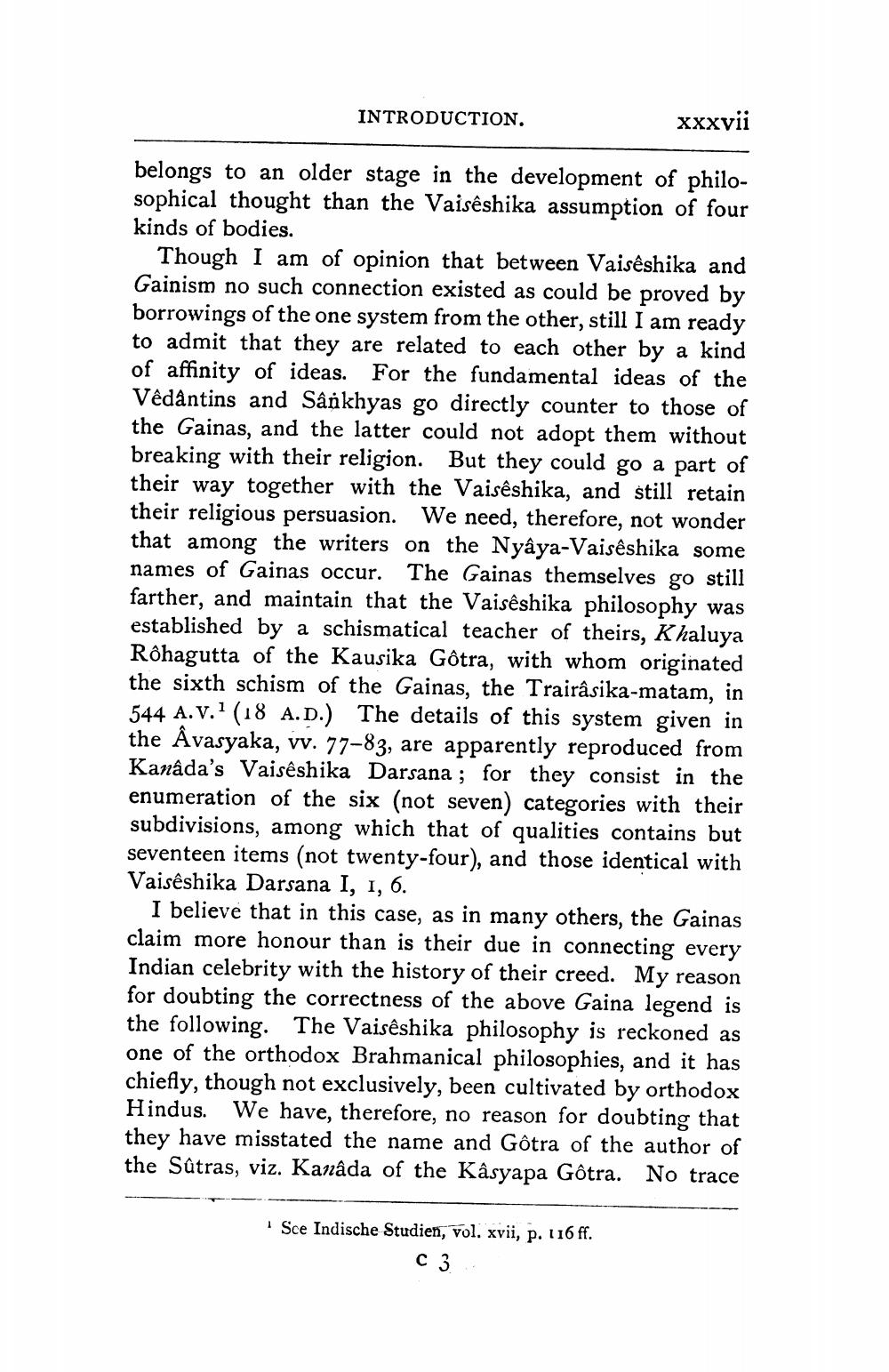________________
INTRODUCTION.
xxxvii
belongs to an older stage in the development of philosophical thought than the Vaisêshika assumption of four kinds of bodies.
Though I am of opinion that between Vaisêshika and Gainism no such connection existed as could be proved by borrowings of the one system from the other, still I am ready to admit that they are related to each other by a kind of affinity of ideas. For the fundamental ideas of the Vedāntins and Sânkhyas go directly counter to those of the Gainas, and the latter could not adopt them without breaking with their religion. But they could go a part of their way together with the Vaisêshika, and still retain their religious persuasion. We need, therefore, not wonder that among the writers on the Nyâya-Vaisêshika some names of Gainas occur. The Gainas themselves go still farther, and maintain that the Vaisêshika philosophy was established by a schismatical teacher of theirs, Khaluya Rôhagutta of the Kausika Gôtra, with whom originated the sixth schism of the Gainas, the Trairâsika-matam, in 544 A.v.(18 A.D.) The details of this system given in the Âvasyaka, vv. 77–83, are apparently reproduced from Kanada's Vaisêshika Darsana; for they consist in the enumeration of the six (not seven) categories with their subdivisions, among which that of qualities contains but seventeen items (not twenty-four), and those identical with Vaisêshika Darsana I, 1, 6.
I believe that in this case, as in many others, the Gainas claim more honour than is their due in connecting every Indian celebrity with the history of their creed. My reason for doubting the correctness of the above Gaina legend is the following. The Vaisêshika philosophy is reckoned as one of the orthodox Brahmanical philosophies, and it has chiefly, though not exclusively, been cultivated by orthodox Hindus. We have, therefore, no reason for doubting that they have misstated the name and Gôtra of the author of the Sûtras, viz. Kanâda of the Kâsyapa Gôtra. No trace
Sce Indische Studien, vol. xvii, p. 116 ff.
C 3




